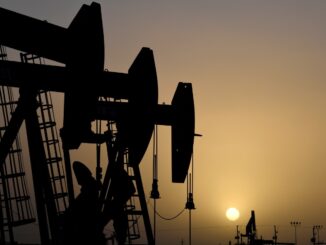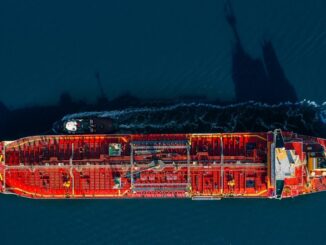
ENB Publishers Note: There are great points in these articles from Bloomberg. We should take a look at the total methane pollution issues and address all of them. The United States is not the leader in the world in this problem, but we are blamed. Let’s start the worldwide discussion of buying energy from those that take the most effort on ESG. We also need to work on all of the methane problems as part of a total energy policy on the path to renewables.
Satellites spotted several large clouds of methane near fossil fuel infrastructure in Iran, which is one of the largest producers of natural gas and responsible for the world’s third-most emissions of the superpotent greenhouse gas from oil and gas activities.
The methane plumes were identified by geoanalytics firm Kayrros SAS using European Space Agency data. The largest leak occurred on Sept. 5, in the southwest of the country near the border with Iraq. The rate of release was about 95 tons per hour, which has approximately the same climate-warming impact as 4,700 cars in the U.K. running for one year.

The good news is that we have the tools we need right now to stop a large chunk of those emissions. Research by the United Nations found that as much as 80% of measures to curb leaks from oil and gas operations can be implemented at no cost, and many may even result in savings. Virtually all methane leaks from the coal sector could be painlessly eliminated.
“A huge amount of methane leakage is happening in the oil and gas industry,” says Cat Abreu, founder and executive director of Destination Zero, which seeks to eliminate fugitive methane. “It’s very cheap to cut, and, in many cases, it’s a job creator.”
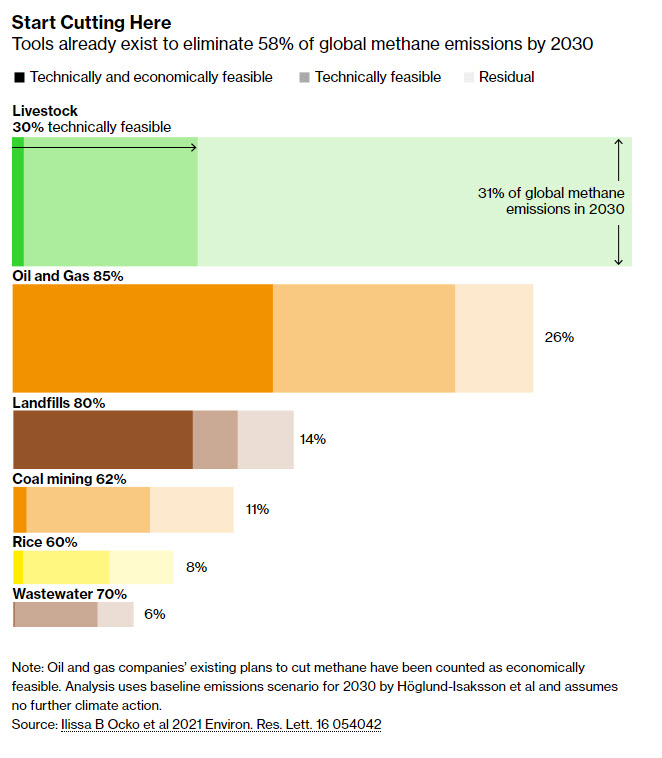
The Quick Fixes
Tackling methane starts with the oil and gas industry, where up to 85% of methane emissions could be mitigated by 2030 using existing technology, according to a paper published in Environmental Research Letters last year. The gas has been leaking freely into the air for years from fossil fuel infrastructure, especially in major producing and consuming nations such as China, Russia and the U.S.
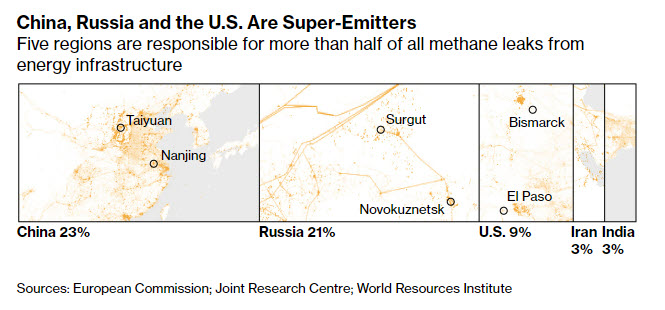
Even though lost methane is a product that companies can sell to heat homes and spin power-plant turbines, most put little effort into tracking down fugitive plumes. Efforts by the U.S. government to monitor leaks since 2014 haven’t nearly reflected the full scope of the climate damage.
Using satellite data, researchers from Harvard found that emissions from the Permian Basin in Texas and New Mexico over an 11-month period were twice government figures. Emissions in the state of Pennsylvania are at least 15% higher than previously thought, according to a study by scientists at Cornell.
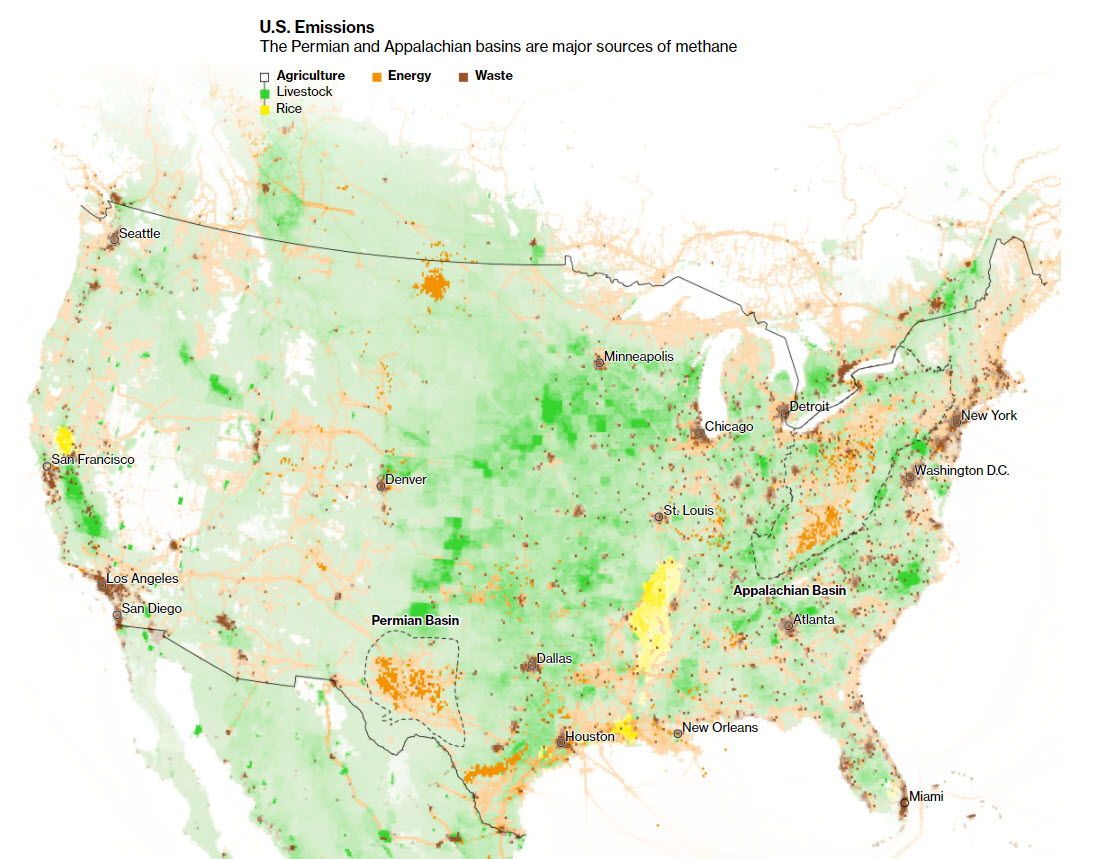
The French satellite-analytics company Kayrros SAS estimates that the Permian basin has emitted more than 2 million tons of methane this year through September, equivalent to the annual emissions from at least 40 million passenger cars.
Leak Detection

1
2
10
25
50
250
Until recently methane detection was more of a craft project than a science. Producers and regulators relied on crude techniques such as throwing a tarp over a pipe to see if it bubbled or sending workers out to inspect equipment. There are now a host of technologies to detect fugitive methane, from parsing satellite data to deploying drones and handheld infrared cameras. Once a leak is detected, plugging it isn’t that different from high-tech plumbing.

“Landfills are pretty complicated facilities,” says Bram Maasakkers, a researcher at the Netherlands Institute for Space Research. Scientists estimate that about 10% of human-caused methane comes from landfills, he says, “but how good the data is varies across the world.”

